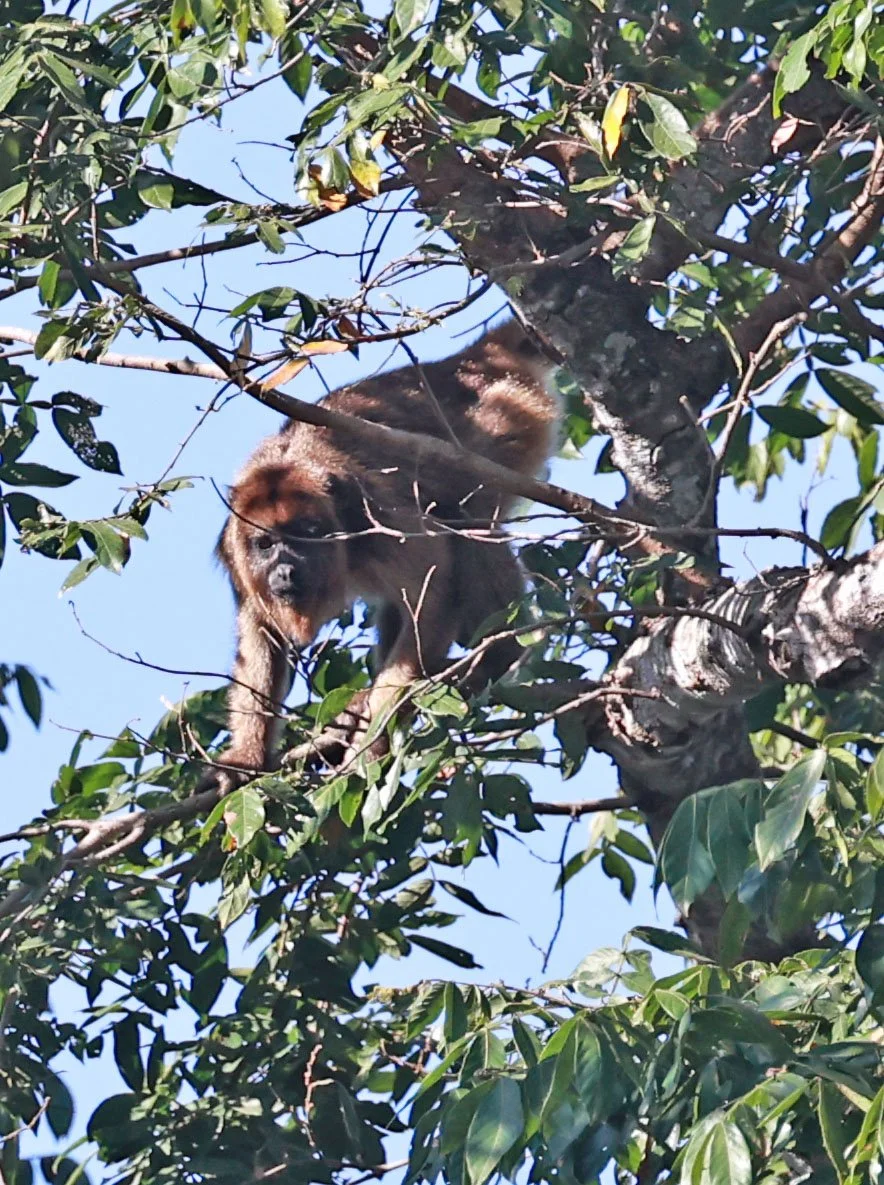
Howler Monkeys
Howler monkeys (genus Alouatta, monotypic in subfamily Alouattinae) are among the largest of the New World monkeys. They are famous for their loud howls, which can travel more than one mile through dense rain forest. These monkeys are native to South and Central American forests. Threats include human predation, habitat destruction, and capture for pets or zoo animals. Fifteen species are recognized. Previously classified in the family Cebidae, they are now placed in the family Atelidae.
In this gallery:
The Yucatán black howler, or Guatemalan black howler, (Alouatta pigra)
Black or Paraguayan Howler Monkey (Alouatta caraya)
Purus Red Howler Monkey (Alouatta puruensis)
Black Howler (Alouatta caraya)
The Black Howler (Alouatta caraya) or black-and-gold howler, is among the largest New World monkeys and a member of the Alouatta genus. The black howler is distributed in areas of South America such as Paraguay, southern Brazil, eastern Bolivia, northern Argentina, and Uruguay.[5][6] This species is sexually dimorphic, with adult males having entirely black fur and adult females and babies of both sexes having an overall golden colouring; which emphasizes black-and-gold in the name. The IUCN Red List has classed the black howler as Near Threatened as a result of a recent population reduction due to a variety of human-caused factors.
The black howler is one of nine species of the Alouatta genus that have been identified and is in the Atelidae family. Because of this species' sexual dimorphism, the taxon for the black howler has been distinguished.
Black howlers are sexually dimorphic, the male and the female are distinguishable due to the difference in their fur coatings. As the male black howler grows older, his fur will change from a golden colour to a complete black fur coat. The female, as well as infants of both sexes, have fur of a golden tone. Female howlers are lighter in weight than males, who are 47% heavier. Males' weight ranges from 6 kg to 7.7 kg. The hyoid bone volume of male black howlers is larger than that of female black howlers; it is assumed that this bone serves as a chamber for their howls. They have prehensile tails with a bare patch of skin on the underside, making them versatile climbers and allowing them to comfortably stay around in the canopy of trees.
Black or Paraguayan Howler Monkey (Alouatta caraya) - Pantanal Brazil

Black Howler from Southern Pantanal, Pousada Aguape




























































































































Black Howlers from Northeastern Pantanal, 1996 trip - Scanned Slides














The Yucatán black howler, or Guatemalan black howler, (Alouatta pigra)
The Yucatán black howler, or Guatemalan black howler, (Alouatta pigra) is a species of howler monkey, a type of New World monkey, from Central America. It is found in Belize, Guatemala and Mexico, in and near the Yucatán Peninsula. It lives in evergreen, semideciduous and lowland rain forests. It is also known as the baboon in Belize, although it is not closely related to the baboons in Africa.
The Yucatán black howler is the largest of the howler monkey species and one of the largest of the New World monkeys. Yucatán black howler males are larger than those of any other Central American monkey species. On average, males weigh 11.4 kg (25 lb) and females weigh 6.4 kg (14 lb). The body is between 521 and 639 mm (20.5 and 25.2 in) in length, excluding the tail. The tail is between 590 and 690 mm (23 and 27 in) long. Adults of both sexes have long, black hair and a prehensile tail, while infants have brown fur. Males over four months old have white scrotums.
The Yucatán black howler shares several adaptations with other species of howler monkey that allow it to pursue a folivorous diet (mostly leaves). Its molars have high shearing crests, to help it eat the leaves. The male of the species has an enlarged hyoid bone near the vocal cords. This hyoid bone amplifies the male howler's calls, allowing it to locate other males without expending much energy, which is important, since leaves are a low-energy food. Howling occurs primarily at dawn and at dusk.
The Yucatán black howler is diurnal and arboreal. It lives in groups of generally one or two adult males, with a ratio of about 1.3 females for every male. Groups generally have between two and 10 members, including juveniles, but groups as large as 16 members have been studied. The home range is between 3 and 25 hectares. Population density can exceed 250 monkeys per square kilometer in the Community Baboon Sanctuary in Belize.
The Yucatán black howler's diet includes mostly leaves and fruit. Flowers also make up a small part of the diet. The breadnut tree can provide as much as 86% of the monkey's diet during some seasons.
As with other howler monkey species, the majority of the Yucatán black howler's day is spent resting. Eating makes up about a quarter of the day, moving about 10% of the day, and the remainder of the day is spent in socializing and other activities.
Females reach sexual maturity at four, and males reach sexual maturity between six and eight years old. Males leave their natal group upon reaching sexual maturity, but females generally remain with their natal group. They can live up to 20 years.
The Yucatán black howler, or Guatemalan black howler, (Alouatta pigra) - Central Belize








Purus Red Howler Monkey (Alouatta puruensis)
Purus Red Howler Monkey (Alouatta puruensis) - Peruvian Andes The Purús red howler (Alouatta puruensis) is a species of howler monkey native to Brazil, Peru and north of Bolivia.







